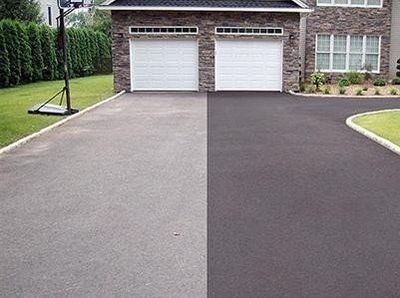Warm Mix Asphalt: A Lasting Service for Sidewalk
Warm Mix Asphalt (HMA) has actually emerged as a leading sustainable selection for sidewalk services, providing a myriad of environmental benefits and ingenious modern technologies. As the need for environment-friendly building techniques expands, discovering the subtleties of HMA's sustainability can give valuable insights into the future of sidewalk remedies.
Environmental Advantages of Hot Mix Asphalt

In Addition, Hot Mix Asphalt aids to reduce city warmth island effects. Its dark color takes in sunlight, decreasing the amount of warmth mirrored back right into the environment compared to lighter-colored pavements. This can reduce ambient temperatures in urban locations, lowering the need for air conditioning and ultimately lowering power consumption.
In addition, Hot Mix Asphalt adds to enhanced stormwater administration. Its porous nature enables water to reenergize and infiltrate the sidewalk groundwater supplies, decreasing overflow and the threat of flooding. These environmental advantages make Warm Mix Asphalt a sustainable choice for paving roads and highways.
Energy Effectiveness in HMA Manufacturing
Is power effectiveness a crucial element in the production of Hot Mix Asphalt (HMA)? Absolutely. Energy plays a considerable function in the production of HMA, affecting both expense and environmental sustainability. One essential element of energy efficiency in HMA production is making use of cozy mix asphalt (WMA) modern technologies (hot mix asphalt). WMA permits the mixing and positioning of asphalt at lower temperatures contrasted to typical warm mix asphalt, leading to minimized energy consumption throughout production. This process not only lowers fuel usage but also decreases greenhouse gas exhausts, making it a much more ecologically friendly option.
Furthermore, advancements in plant modern technologies have led to even more energy-efficient HMA production procedures. Modern plants are developed with functions like recycled asphalt pavement (RAP) handling capabilities, reliable burner systems, and boosted insulation, all adding to power cost savings. By optimizing power use in HMA production, the sector can minimize its carbon impact while preserving high-quality sidewalk materials. Energy performance is, for that reason, a crucial factor to consider in guaranteeing the sustainability of Warm Mix Asphalt production.
Recyclability of Warm Mix Asphalt
The recyclability of Hot Mix Asphalt (HMA) is a critical element of its sustainability and long-lasting ecological influence. HMA is one of the most recycled products in the USA, with over 100 million lots of redeemed asphalt sidewalk (RAP) being recycled each year in new sidewalk building and construction. Reusing HMA uses numerous ecological benefits, such as decreasing the requirement for virgin products, decreasing power consumption during production, and decreasing the amount of waste sent to garbage dumps.
The procedure of recycling HMA involves crushing the existing sidewalk, crushing it into smaller sized items, and mixing it with new accumulation and asphalt binder to produce a recycled mix. In general, the recyclability of HMA plays a significant duty in advertising sustainable practices within the sidewalk market.

Long-Term Efficiency of HMA
Asphalt sidewalks demonstrate Full Article durability and strength over an extended duration, reflecting the long-term efficiency of Hot Mix Asphalt (HMA) In addition, advancements in HMA modern technology, such as the use of polymer-modified binders and warm mix asphalt, have actually even more boosted the sturdiness and long life of HMA pavements. By focusing on top quality building and upkeep practices, HMA proceeds to confirm itself as a cost-effective and this page sustainable option for long-lasting pavement framework.
:max_bytes(150000):strip_icc()/barricade-tape-sealed-driveway-big-56a583145f9b58b7d0dd3d87.jpg)
HMA: Longevity and Sustainability
Showing both durability and sustainability, Warm Mix Asphalt (HMA) has actually become a keystone in the building of long-lasting sidewalk facilities - hot mix asphalt. HMA's toughness comes from its capacity to stand up to hefty tons, harsh climate condition, and high web traffic volumes, making it a trustworthy choice for highways, highways, and flight terminal paths. The structure of HMA, which typically includes accumulations, binder, and filler, plays an important duty in enhancing its durability and resistance to damage
In addition, HMA's sustainability depends on its recyclability and energy-efficient manufacturing procedure. The ability to reuse redeemed asphalt sidewalk (RAP) in new HMA blends lowers the demand for virgin materials and lessens the ecological impact of pavement building and upkeep. Additionally, the energy effectiveness of generating HMA depends on its lower blending temperature levels compared to other pavement materials, causing lowered energy consumption and greenhouse gas discharges.
Final Thought
In conclusion, hot mix asphalt (HMA) uses a lasting option for sidewalk with its eco-friendly features. HMA's recyclability, power efficiency in production, and long-term resilience make it an environmentally friendly option for road building. By saving natural deposits, decreasing waste, and lowering greenhouse their explanation gas discharges, HMA plays an essential role in promoting sustainability in infrastructure development. Its capacity to minimize city warm island impacts even more highlights its significance in creating durable and eco conscious pavement systems.
HMA is one of the most recycled products in the United States, with over 100 million heaps of redeemed asphalt pavement (RAP) being reused each year in new sidewalk building.The process of reusing HMA involves crushing the existing pavement, squashing it into smaller sized pieces, and blending it with new aggregate and asphalt binder to produce a recycled mix.Asphalt pavements show resilience and strength over a prolonged duration, reflecting the lasting performance of Warm Mix Asphalt (HMA) Additionally, innovations in HMA innovation, such as the usage of polymer-modified binders and warm mix asphalt, have actually further improved the durability and durability of HMA sidewalks. The capability to recycle reclaimed asphalt sidewalk (RAP) in new HMA blends reduces the need for virgin products and reduces the ecological impact of pavement building and construction and maintenance.